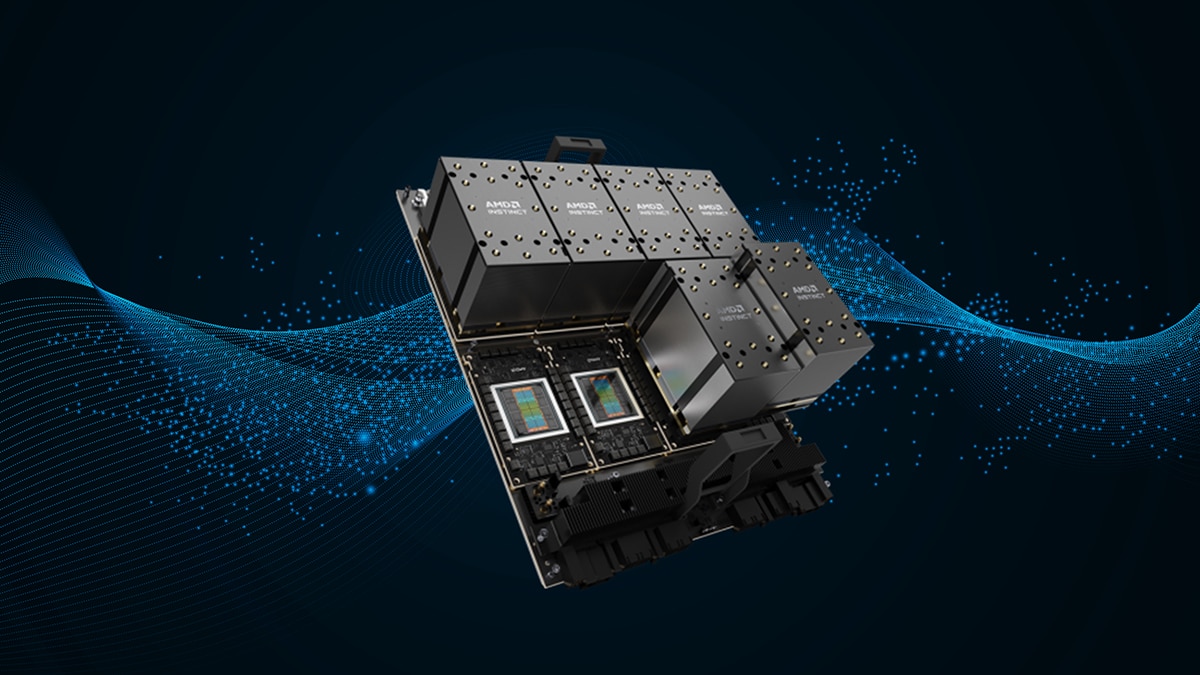AMD HPC and AI Customers: ROCm™ 5.7 Is Here
The AMD ROCm™ open platform is an open-source software platform designed to facilitate HPC and AI compute on both AMD and other vendor hardware. Through ROCm, customers can enjoy new levels of freedom and accessibility when running their HPC workloads.
ROCm update 5.7 brings with it a wealth of new updates, features, and improvements that ensure your customers gain even more from their AMD hardware across various applications. Support for additional AMD graphics cards, hipTensor support, and performance improvements; ROCm™ 5.7 improves all this and more for users.
Machine Learning on AMD Radeon™ Graphics
Customers can now tap into the power of AMD Radeon™ RX 7900 Series desktop graphics to run their machine learning models and algorithms, thanks to ROCm 5.7 on Linux® supporting AMD Radeon™ RX 7900 XTX and AMD Radeon™ PRO W7900 graphics.
AMD Radeon™ RX 7900 Series graphics are built on the AMD RDNA™ 3 architecture and feature more than twice the AI performance per compute unit when compared to previous generation products.1 Additionally, they provide up to 192 AI accelerators and incredible memory bandwidth, featuring up to 24 or 48GB of graphics memory that helps customers handle the largest machine learning models.
Customers can now use readily available hardware to create local, private workflows that enable machine learning training and more, providing an excellent option for those who previously relied on cloud-based solutions.
Support for hipTensor
ROCm update 5.7 introduces new support for hipTensor, the AMD C++ library for accelerating tensor primitives – building blocks that can be used in complex HPC and AI workflows – increasing their flexibility, shortening development time, and improving end-to-end efficiency.
MIGraphX’s New Feature
MIGraphX is an inference engine that focuses on accelerating machine learning inference for AMD hardware by leveraging several graph-level transformations and optimizations, taking pre-existing models through a series of optimizations, focusing on both speed and accuracy.
MIGraphX now has a new feature, Dynamic Batch. Prior to ROCm 5.7, customers would need to compile different models if batch sizes differed. For customers looking to run models with multiple batch sizes depending on the data input, this new feature now allows them to use a single compiled model to support multiple batch sizes, streamlining machine learning workflows, reducing storage space requirements, and reducing the script logic required by the system to determine which model should be used.
rocRAND RNG Performance Increases for Discrete Distributions
Part of the ROCm open-source software platform, the rocRAND library provides functions for the generation of random numbers on AMD graphics, ideal for simulations, statistical models, and machine learning algorithm application.
Along with the other updates arriving with ROCm update 5.7, rocRAND’s random number generation (RNG) performance has been increased by up to 15% for discrete distributions, ensuring customers applying AMD hardware for such applications can enjoy increased efficiency and time-to-results.
AMD continues to deliver ongoing improvements to both new and existing technologies, enhancing customer applications across HPC and machine learning. With a continued focus on open-source, easily accessible software and greater outcomes for customers, partners can continue to reliably deliver AMD products to customers, knowing they’re providing leadership products that will support business goals for years to come.
For further information on ROCm update 5.7, please read the AMD blog post here. To learn more about AMD products and technologies in the HPC space, speak to your AMD representative or contact us here.
AMD Arena
Enhance your AMD product knowledge with training on AMD Ryzen™ PRO, AMD EPYC™, AMD Instinct™, and more.
Subscribe
Get monthly updates on AMD’s latest products, training resources, and Meet the Experts webinars.

Related Articles
Related Training Courses
Related Webinars
Footnotes
- Based on AMD internal measurements, November 2022, comparing the AMD Radeon™ RX 7900 XTX at 2.5GHz boost clock with 96 CUs issuing 2X the Bfloat16 math operations per clocks vs. the AMD Radeon™ RX 6900 XT graphics card at 2.25 GHz boost clock and 80 CUs issue 1X the Bfloat16 math operations per clock. RX-821.
- Based on AMD internal measurements, November 2022, comparing the AMD Radeon™ RX 7900 XTX at 2.5GHz boost clock with 96 CUs issuing 2X the Bfloat16 math operations per clocks vs. the AMD Radeon™ RX 6900 XT graphics card at 2.25 GHz boost clock and 80 CUs issue 1X the Bfloat16 math operations per clock. RX-821.








